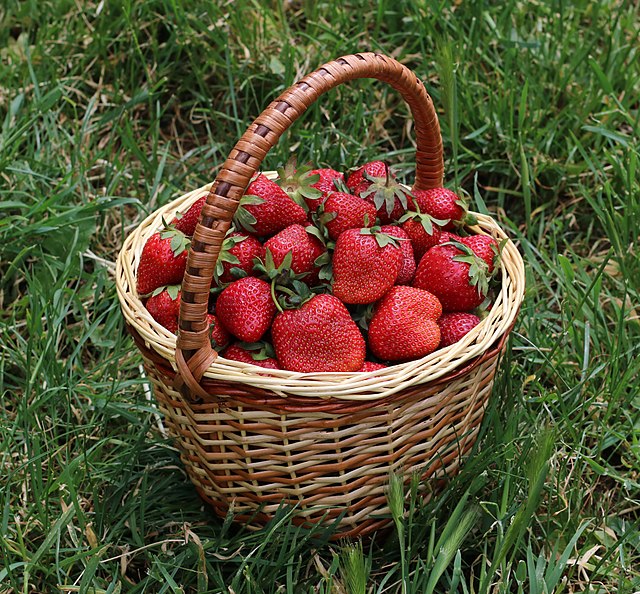As late summer rolls in, the few hazy days of sunshine we experience in the year are maturing into harvest time. Ireland’s mild and wet climate means that we have a long growing season for many vegetables, and intensive agriculture practices and imports from warmer climates into Ireland have allowed us to enjoy seasonal foods all year round.
However, as the carbon footprint of these imports and the wasteful plastic packaging required to keep fruit and vegetables fresh in transit becomes more apparent, many have looked to local farmer’s markets or other methods in sourcing their next meal. The practice of foraging has seen a resurgence in Ireland. Food that is in season in your locality is cheaper, fresher, tastier and more nutritious than when it is consumed packaged in a supermarket.
Ireland is home to many fruits and wild berries growing in the untamed brambles. Green apples grown in our climate have an acidic tang to their white flesh and give a welcome crunch to any summer salad. We would suggest slicing them into thin strips and throwing together mixed lettuce leaves, rocket leaves, roasted sweet potato and feta cheese topped with pumpkin seeds to create a side that is full of nutrients. This is a guaranteed crowd pleaser for any August BBQ.
“Elderflower cordial makes great use of the abundance of the plant blooming this season. The tiny petal flowers hang in umbrella clumps in hedgerows near farmlands and country roads.”
Blackberries and raspberries are ripe from early July until August. These berries are notably delicious in homemade jams, especially the tart gooseberry which delivers a light, fresh taste with a tight zing. Elderflower cordial makes great use of the abundance of the plant blooming this season. The tiny petal flowers hang in umbrella clumps in hedgerows near farmlands and country roads. They should be picked when the flowers are dry and in sunshine, as most of the flavour is sourced from the pollen. When foraging for elderflower be certain of the plant and look for the dark blue elderberries growing in clumps nearby. Beware of giant hogweed, which is pervasive in our countryside and also has white flowers — yet it comes up from the ground in stalks. Its sap can cause third-degree burns on the skin when exposed to sunlight!
Cordial recipes vary depending on how many bundles of elderflower you harvest and how concentrated you like the sweet musky taste to be. In a large pot add 2.5 kilograms of sugar to 1.5 litres of water. Five tablespoons of citric acid will help it last up to three months in the fridge and two weeks when opened. When the mixture is brought to a boil, turn down the heat and add the fruit and zest of three lemons to the sugar syrup. Brew the flowers in the pot for two to three days and strain with a muslin cloth or a regular sieve into sterilised bottles.
“Strawberries can hold their own unescorted by superfluous dessert fixings as they are naturally sweet, but we recommend infusing them with vodka to make a sweet spirit refresher.”
However, Irish strawberries are the real fruity stars of the summer. From their puny origins in the strawberry beds on the River Liffey 260 years ago, to their current location in the sunny south-east — it’s not difficult to find these juicy punnets in every supermarket on the isle. Roadside sellers remain our favourite way to source the berries. What better way to spend the journey home from work on a warm evening than eating strawberries straight from the cardboard box sitting in your lap? Strawberries can hold their own unescorted by superfluous dessert fixings as they are naturally sweet, but we recommend infusing them with vodka to make a sweet spirit refresher. Simply chop up enough strawberries to fill an airtight container and pour in your favourite vodka — this will keep for about a month and is delicious with a lemonade mixer!
“Seaweed found on our shores such as kelp, carrageen, dillisk and sea spaghetti are packed full of minerals and are edible for a daring dinnertime.”
A recommendation for the more adventurous forager: a trip to the seaside can leave you with more than a mouthful of saltwater when plunging in. Seaweed found on our shores such as kelp, carrageen, dillisk and sea spaghetti are packed full of minerals and are edible for a daring dinnertime. Tender Sea Spaghetti actually has a similar texture to pasta when it is boiled. Why not try incorporating it into a tasty homemade tomato sauce?
Foraging may not sound too appealing, but even the least green-fingered among us should see what their locale has to offer. It challenges us to be creative and build a connection between our mouths and the nature around us. Most importantly, the slow preparation of the meal allows us to become more mindful of the production journey, from field to fork. While you may have to put in more effort to source some of these foods or grow your own, the fresh ingredients you bring from garden to table is a very fruitful adventure.






